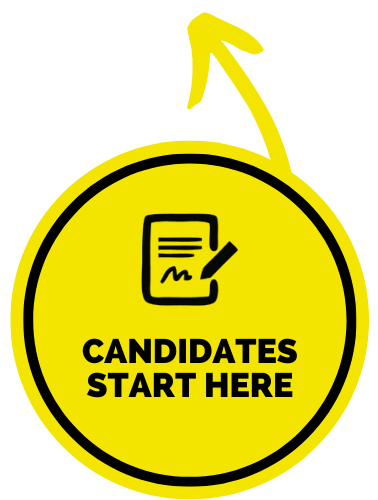
Hiring the right talent begins with the job description. It serves as the first touchpoint between your company and potential candidates, setting the tone for what the role entails and who you’re looking for. A well-crafted job description not only attracts qualified candidates but also helps in filtering out unqualified ones. Here’s a guide on how to write effective job descriptions that can find the right talent.
1. Clear and Concise Job Title
The job title is the first thing candidates will notice. It should be specific and reflective of the role’s responsibilities. Avoid using vague or trendy titles like “Rockstar” or “Guru” as they may confuse candidates. Instead, stick to conventional titles that clearly define the role, such as “Marketing Manager,” “Software Developer,” or “Data Analyst.”
Example: Instead of “Marketing Guru,” use “Digital Marketing Specialist.”
2. Start with an Engaging Overview
The job description should open with a brief and compelling overview of the position. This section should highlight the main objectives of the role, what makes the job exciting, and how it contributes to the company’s success. The idea is to grab the candidate’s attention and encourage them to keep reading.
Example: “We are seeking a dynamic Digital Marketing Specialist to lead our online marketing strategies. You will have the opportunity to shape our brand’s digital presence while working with a highly motivated team.”
3. Define Responsibilities Clearly
Be explicit about the day-to-day duties and responsibilities of the role. Bullet points work well here as they’re easy to scan. Include details such as key tasks, collaboration with other teams, tools or software used, and any reporting lines. Candidates should walk away with a clear understanding of what a typical day in the role would look like.
Tip: Avoid jargon or overly technical terms unless absolutely necessary. You want to strike a balance between specificity and accessibility.
4. List Required Skills and Qualifications
Divide qualifications into must-haves and nice-to-haves. This distinction helps candidates self-assess their fit for the role. Clearly indicate the educational background, certifications, technical skills, and soft skills required to succeed in the position. This is also the place to mention any minimum years of experience.
Example: “Bachelor’s degree in Marketing or related field” (must-have), “Experience with SEO tools such as Google Analytics” (nice-to-have).
5. Highlight Company Culture and Values
Talented professionals want to work in environments where they can thrive and feel valued. Briefly describe your company culture, core values, and what makes your workplace unique. Be honest and realistic in this section; candidates will appreciate transparency.
Example: “At [Company Name], we value creativity, collaboration, and continuous learning. We believe in empowering our team members to take initiative and drive change.”
6. Include Salary and Benefits Information
Although this can sometimes be a sensitive topic, being upfront about salary and benefits is key to attracting the right talent. Include a salary range that reflects industry standards and mention any additional perks such as remote work opportunities, flexible schedules, health benefits, or professional development programs.
Example: “Salary range: R55,000 – R65,000 per month, based on experience. We offer comprehensive medical aid, remote working options, and a generous leave policy.”
7. End with a Strong Call to Action
Encourage candidates to apply by outlining the next steps. This might involve filling out an online application, submitting a cover letter, or providing links to their portfolios. Make sure to include any deadlines and the point of contact for inquiries.
Example: “To apply, please submit your CV and cover letter through our online portal by [Date]. For any questions, feel free to reach out to [Contact Name] at [Email].”
8. Optimise for SEO
To increase visibility, incorporate keywords that job seekers might use when searching for a similar role. This can include job titles, industry-specific terms, and skills that are essential for the position. SEO-friendly descriptions can help your job listing appear higher in search results on job boards and search engines.
In Summary
Writing effective job descriptions is about clarity, specificity, and inclusiveness. By following these best practices, you’ll increase your chances of attracting qualified candidates who not only have the right skills but also fit well within your company culture.
FAQs
1. Should I include the salary range in the job description?
Yes, including a salary range is recommended. It increases transparency and attracts candidates who are genuinely interested in the role. Candidates tend to skip listings that do not include compensation information, especially when there are other options available.
2. How long should my job description be?
Aim for 400-600 words. The description should be detailed enough to provide clarity on the role, responsibilities, and qualifications, but concise enough to keep the reader engaged.
3. Can I mention company values or mission statements in a job description?
Absolutely. Highlighting your company’s values and culture helps candidates understand if they align with your mission. This section is especially appealing to those looking for a workplace that matches their personal values.
4. What’s the difference between ‘required qualifications’ and ‘preferred qualifications’?
Required qualifications are the non-negotiable skills or experience needed to perform the job, while preferred qualifications are those that are nice to have but not mandatory. Clearly distinguishing between the two helps candidates understand whether they are a fit for the role.
5. Is it necessary to use gender-neutral language?
Yes, using gender-neutral language is important for creating an inclusive environment. Avoid gendered terms like “he” or “she,” and opt for “they” or phrases like “the candidate” instead. Tools like gender decoder software can also help identify biased language in your descriptions.
About Job Crystal
Job Crystal is a leading innovator in the field of recruitment AI, dedicated to creating cutting-edge technologies that help speed up the recruitment process. With a strong focus on ethics, transparency, and human collaboration, we strive to develop AI systems that empower individuals and organisations while upholding the highest standards of responsibility.
About The Author

Sasha Knott, CEO
With over 25 years of experience in the Technology sector, having worked within the Financial Services Industry and E-Commerce, and with an expertise in strategy, Sasha is a tech dreamer, always on the lookout for where the future of recruitment is headed and taking Job Crystal with her.










